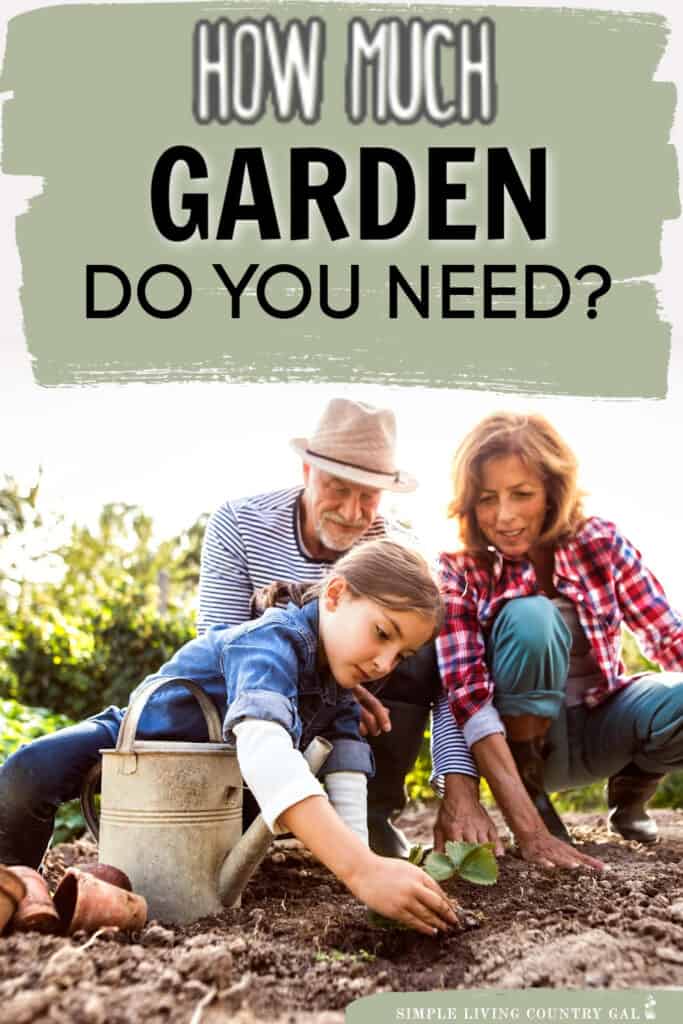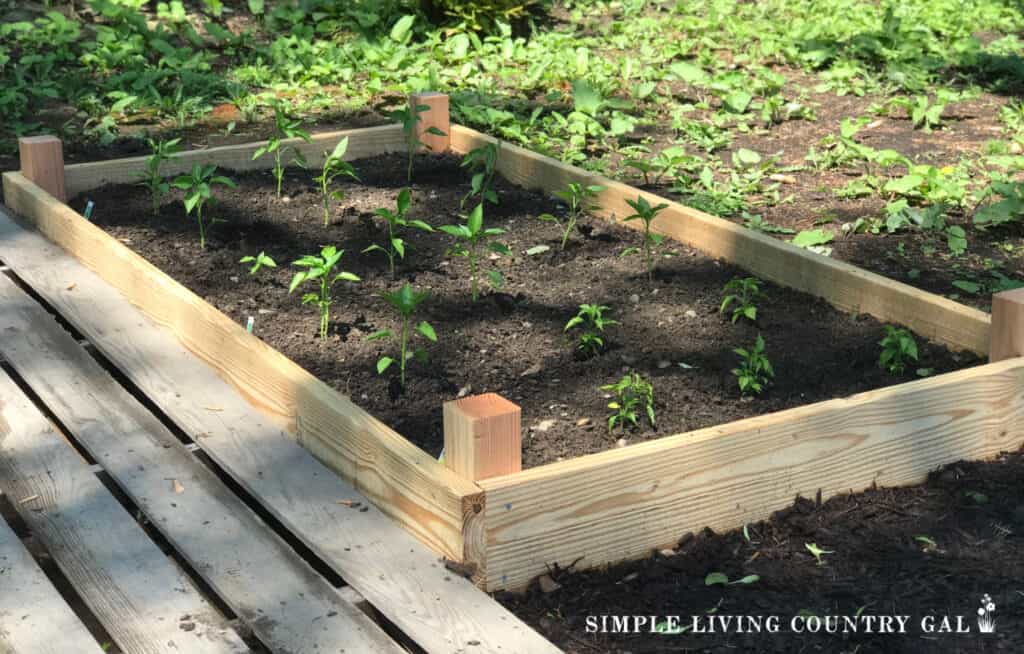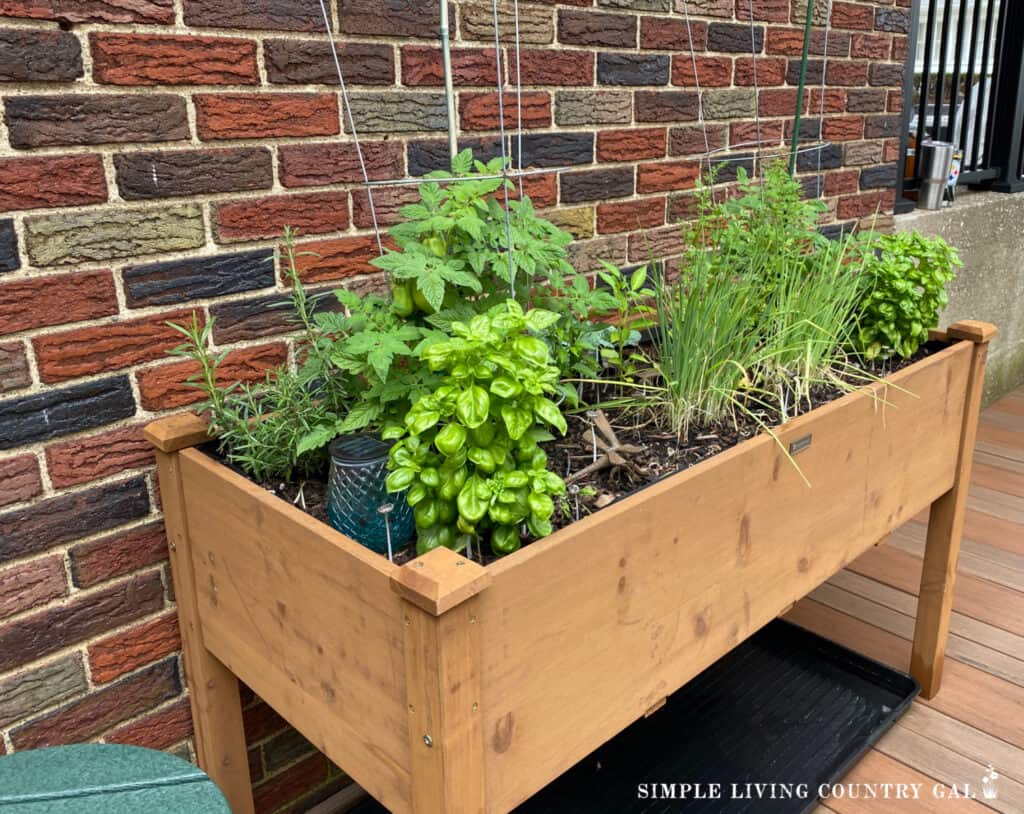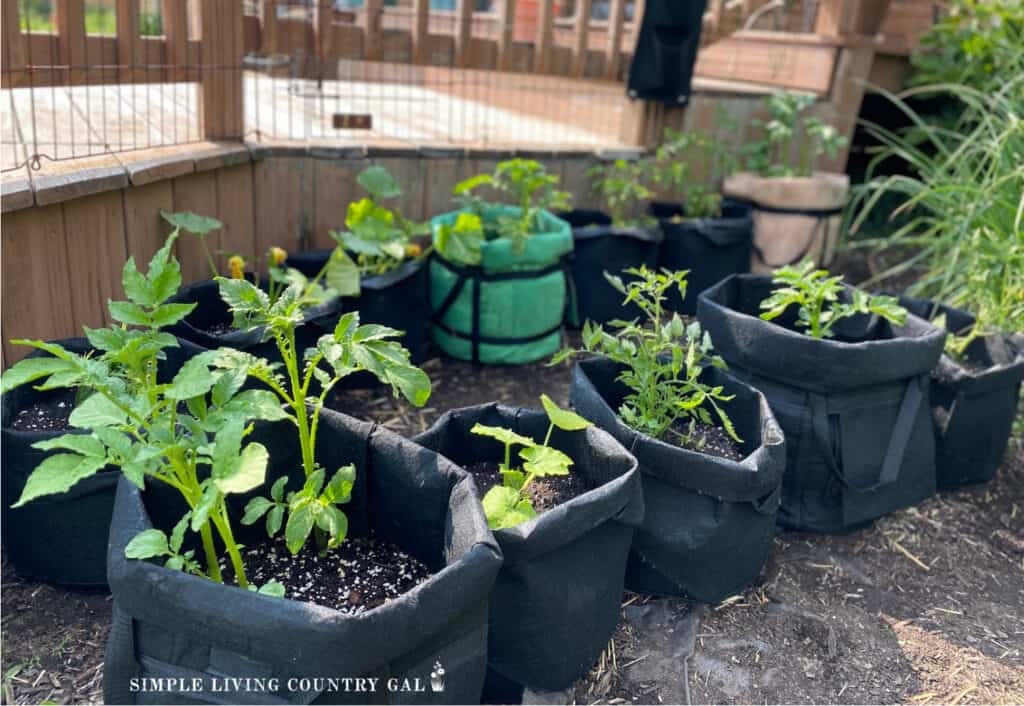Average garden size
Growing a garden is a great way to be more self-sufficient, but how much garden do you need? We will talk about the average garden size for different situations so you can grow enough food without growing too much.
A great thing to know for gardening 101 so you enjoy growing your own food rather than dreading it.

There is nothing better than a freshly picked red ripe tomato from a garden. And when you have not only tomatoes but cucumbers, potatoes, peppers, and snap peas all growing together you have a treasure to enjoy all summer long. If you’re considering starting a vegetable garden, you might be wondering, how big should it be? Depending on your circumstances, the size you start out with will differ. In this article, we’ll talk about the ideal size for a vegetable garden, whether you’re a single person, an empty nester, or a large family.
Average Garden Size
Average is a good place to start when growing your first garden. This will ensure you have enough produce for your family’s size without drowning in work and upkeep. Let’s go over the sizes for the most common situations.
Garden Size for a Single Person
A garden measuring between 2 to 3 feet wide by 6 to 10 feet long should be enough for a single person. With this size, you can grow a large variety of plants. With this size, you can grow lettuce, spinach, tomatoes, bell peppers, and a few herbs.
Tips for Single Gardeners:
With raised garden beds, you can extend your growing season by a few weeks or sometimes months. You can also transfer your herbs into containers and bring them indoors to continue growing throughout the winter.

Garden Size For Empty Nesters
A couple at home with no children will require a bit more space. A good size would be between 10 to 15 feet wide, by 12 to 20 feet long should be enough. This size allows for a diversity of vegetables that can be enjoyed fresh as well as canned for future use. Winter squash plants alongside smaller plants like herbs and carrots. You would need at least six to twelve inches of soil to allow for good root growth.
Tips for Empty Nester Gardeners:
Use containers to grow additional items and keep them close to your home. Things like lettuce, herbs, carrots, and radishes are all great to have quick access to so you can enjoy a salad with every meal.

Small and Medium Sized Plants to Grow:
Garden Size For Small Families
A family consisting of two to four people will require a larger garden. A garden measuring between 15 to 20 feet wide by 20 to 25 feet long should yield a bountiful harvest. This size allows for adequate spacing between plants which will provide room for growth and circulation of air.
Tips for Small Families:
Add in a few straw bales to grow herbs, peas, and beans. This tip can double your garden’s size without having to till up additional land to do so. You can also add in a few grow bags for potatoes and other root plants.

Garden Size For Large Families
For a large family consisting of four to six or more family members, a garden measuring between 25 to 30 feet wide by 30 to 50 feet long should be a perfect size. This size will provide ample room for larger vegetables like potatoes, pumpkins, corn, watermelon, and cantaloupe.
Tips for Large Families:
Consider planting perennials that come up year after year, such as asparagus and strawberries.
Large Family Plants to Grow:
- How to Grow Cantaloupe for Beginners
- How to Grow Strawberries for Beginners
- How to Grow Pumpkins for Beginners
Pros and Cons of Small, Medium and Large Gardens:
Small Gardens: The advantage of a small garden is that it requires less water, fertilizer, and maintenance. They also take up less space in your yard, so you still have room for other outdoor activities. On the downside, they have limited space for the variety of crops you can grow.
Medium Gardens: Medium-sized gardens tend to have higher yields than small gardens and consume more produce. The larger size allows for diverse planting, crop rotation, and companion planting to promote growth. On the downside, they may require more time and resources for maintenance and may take up more space.
Large Gardens: Large gardens are perfect for families who consume a lot of vegetables and have the space to accommodate them. The significant advantage of a large garden is that it allows for diverse crop rotation, companion planting, and more substantial yields. On the downside, the larger the garden, the more resources it requires to maintain and the more space it occupies.
When deciding the size of your garden, consider the amount of space you have available, your family’s needs, and the resources available. Small gardens are great for single persons and small spaces; medium-sized gardens for small families, while large gardens are perfect for extensive family usage. We hope this article provides the necessary guidance you need to create the ideal-sized vegetable garden.
More Gardening Resources:
- Easy Container Gardening Tips for Beginners
- Companion Vegetable Planting
- First-Time Gardener Vegetables
